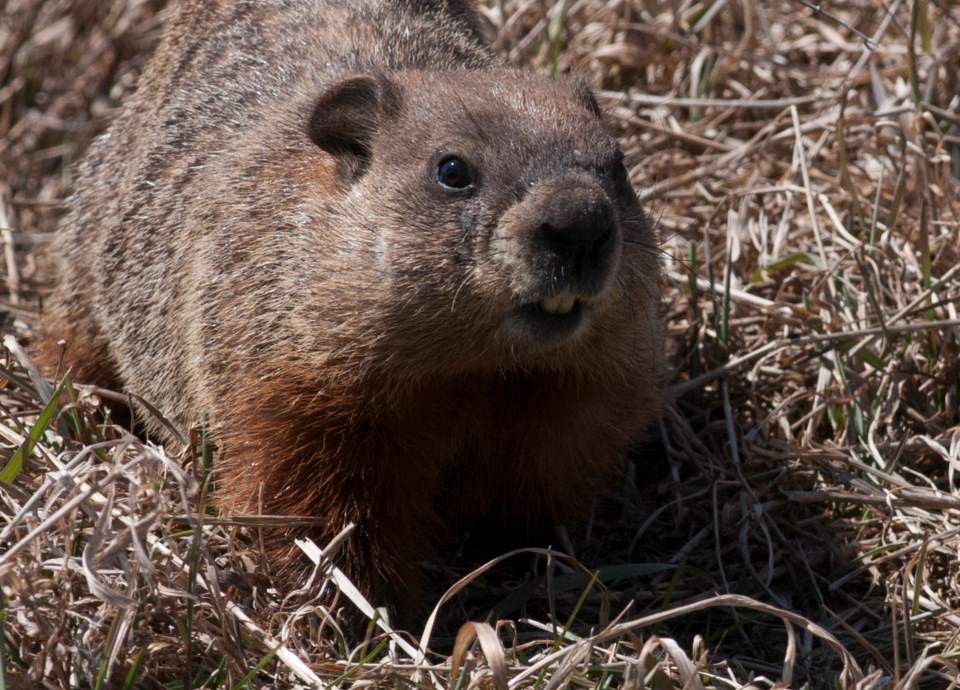As we jump over that figurative seasonal puddle from March into April there can be noted a very dynamic shift within the natural communities. Winter things are disappearing and spring things are showing up in every habitat type from wilderness to urban.
By now most of you will have probably observed the ‘big three’: Canada geese (already paired and looking for nest sites), red-winged blackbirds (but only the males so far) and robins. Ducks are trickling in as the ice retreats and great blue herons will soon be stalking the icy shorelines. Spring migration is rocking on!
A part of this seasonal movement of birds can be noted around your bird feeder, in the manner of “who’s missing?”
Some of our winter visitors were just that, visitors, and they want to go home now, too. So the juncos and finches are moving out, following that warmish front that is daily moving northwards.
Replacing these northern visitors will be migrants that also breed in the higher parts of the province, so keep your eyes open for tree, white-crowned and fox sparrows to be moving through in the next few weeks.
Not everything migrated of course, some critters chose to hibernate, to sleep through the whole ice and snow and cold thing. Just go to bed in October and wake up in March; nothing like a six-month snooze to get through a rough spot of weather.
Chipmunks wake up from their deep sleep quite early, sometimes even in late February. The first out of bed are the males and they are both hungry and ready to claim territory. But if a cold snap occurs they seem more than ready to crawl back to bed for a week or two.
Ground hogs will also be waking up soon, their muddy tracks pin-wheeling outwards from their burrow entrance as they venture forth in search of something green to eat.
Also hibernating in our region are the jumping mice, both the woodland and meadow varieties. Looking like an escaped gerbil, these mice are difficult to see under best conditions as they leap incredible distances when startled. They, too, are waking up with the warmth of the sun and the soaking in of meltwater.
Speaking of hibernating, there are a few butterfly and moth species that do just that, and not as an egg mass or cocoon. Late last fall the adult mourning cloak and tortoiseshell butterflies found cracks in tree bark or a space under a log to crawl into for weather protection.
As the maple sap drips out of a damaged branch, these butterflies are to be found flitting about even when snow remains on the ground.
The advantage of overwintering as an adult butterfly is that they can mate and lay eggs way earlier that other species, which means their eggs are hatching into hungry caterpillars just as the succulent new tree leaves are popping open. Timing is everything.
If you are really keen to check for signs of spring, take a look in the meltwater ponds that can be found in our wooded areas. Three species of salamanders are already checking out these mating hot-spots. Both the blue-spotted and yellow-spotted salamanders emerge from the newly thawed soil and trek downhill to small ponds of collected water.
The two-toed salamander prefers to hang out with friends in the ephemeral ponds that occur on the rocky Canadian shield. Even with ice still encircling these pools, the salamanders are readily taking the plunge!
And of course the botanist within all of us will be checking closely to see which spring wildflower species will be the first to be showing their blossoms. Skunk cabbage (rare in our parts) will be the first, but the red maples are now breaking open. When you see coltsfoot lining the roadsides, you can take satisfaction the spring has truly settled in.
